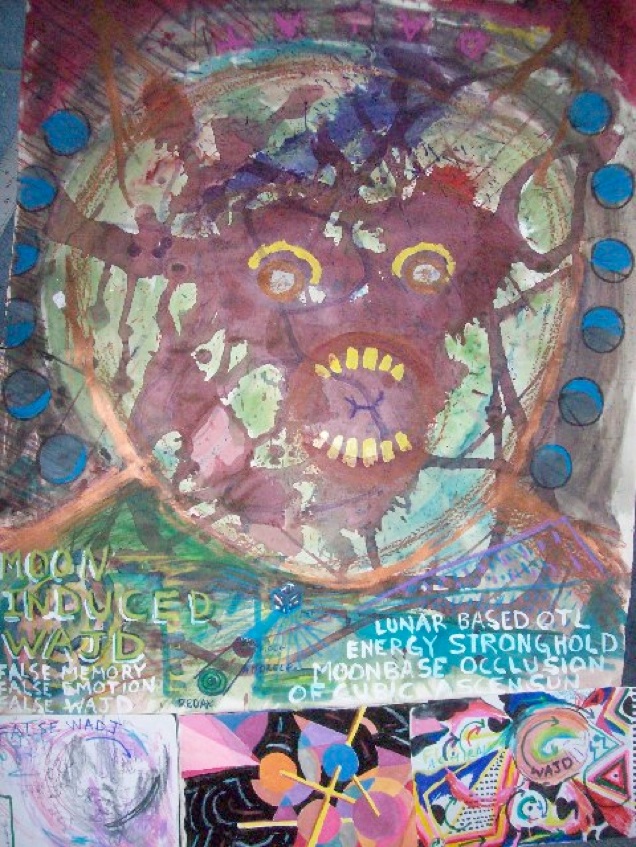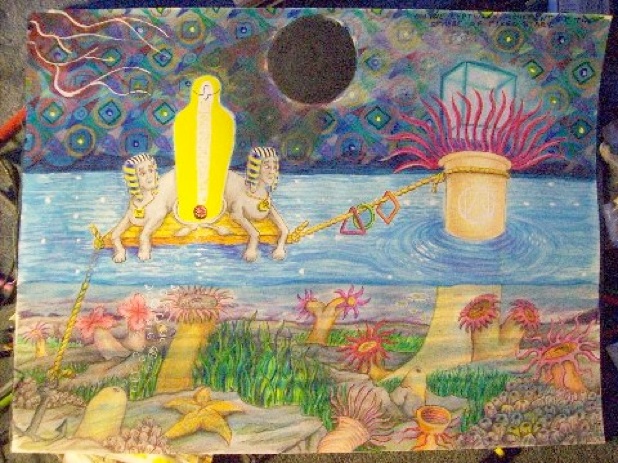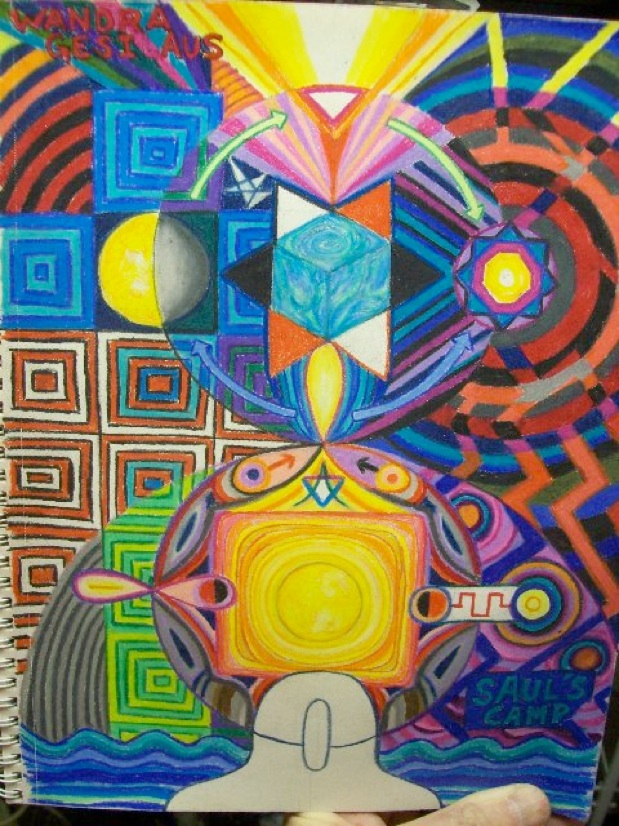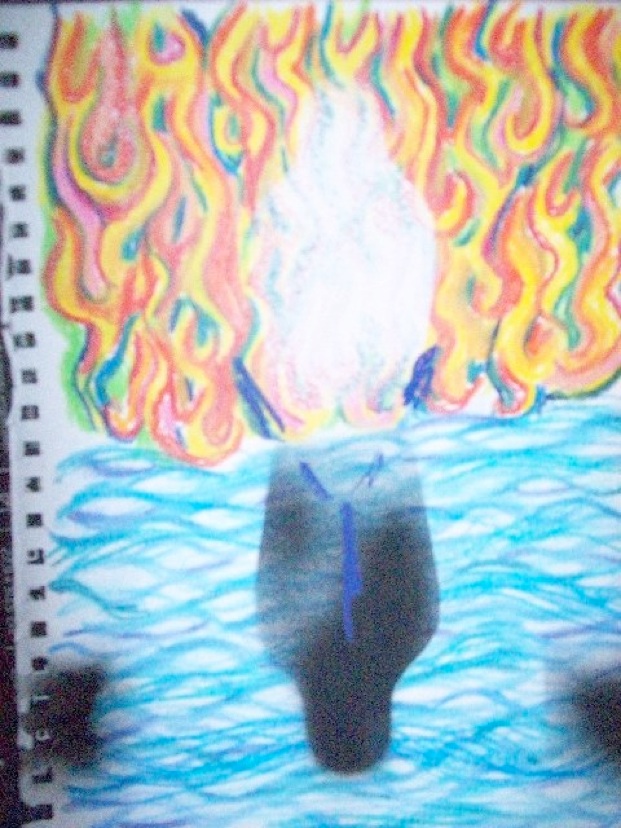speer Drawings W


Subject: osholon transmission/information 81911
Date: August 19, 2011 10:28:34 PM GMT-03:00
events of lunar eclipse.turning point last winter becomes clear with travel upon osholon carapace to moon base of time grinders. otl energy generators are/will be/ were constructed to occlude cubic h30 ascensun and inhibit incursion of osholon energy/ apeirion into earth consciousness. moon base technology constructed by time grinder out to lunch energy to obstruct transmission of apeirion energy.here is weird, deceptive life.
3 images below main transmission are older thoughtforms of various otl energies. osholon capsule is vehicle past otl moon of time grinders into realm of apeirion, cubed sphere...otl moon energy create false wadj, false memory, false emotion
http://www.youtube.com/watch?v=FAxUWfe_PJY
at 4:43 in above osholon manifestation in dream machine observed by osholon awareness
http://news.discovery.com/space/can-neutron-stars-crush-neutrons-into-cubes-110816.html#mkcpgn=msn1
Can Neutron Stars Crush Neutrons into Cubes?
Like the occupants of an over-capacity elevator with their personal space invaded, the neutrons inside the heart of neutron stars are no stranger to pressure. But unlike the passengers of an elevator, according to new research, the individual neutrons' shape will become warped under huge gravitational pressures, potentially creating an entirely different state of matter.
Neutron stars are among some of the most exotic objects in the known Universe. Massive, yet tiny, these objects are unimaginably dense. They are typically around 24 kilometers (15 miles) in diameter -- a little longer than Manhattan Island -- yet have the mass of between 1.4 to 2.0 suns. Therefore, a pinhead-sized scoop of neutron star material would have a mass of around a million tons.
Naturally, when dealing with this kind of exotic material, some oddities are to be expected.
In the center of a neutron star it is predicted that the individual nucleons (pure neutrons) take up 74 percent of the space -- a similar packing density of protons and neutrons found in atoms of regular matter. This assumes that each neutron is a perfect sphere, but say if this isn't the case?
According to Felipe Llanes-Estrada, of the Technical University of Munich, Germany, and Gaspar Moreno Navarro, of the Complutense University in Madrid, Spain, if the neutron star is massive enough, nearly 100 percent of the available space may be filled with neutrons -- changing our understanding of these super-dense objects.
Llanes-Estrada and Moreno Navarro simulated a neutron star's neutrons under pressures that cause them to fill the remaining 26 percent of empty volume. For this to be possible, the neutrons become more "cube-like" and less "sphere-like." It is as if nature optimizes the quantum space available to the neutrons in high-pressure environments. It is, after all, more efficient to pack stuff in cubes, rather than spheres.
However, as noted by the arXiv blog, there's a catch. The neutron star's nucleons can only be forced into cubes when the density is very high. Only when the neutron star has a mass of close to two solar masses (the maximum theoretical neutron star mass allowed) will its nucleons take on cube-like qualities.
Larger-mass neutron stars aren't thought to exist as the gravitational force will be too powerful for degenerate matter to maintain its structure. In other words, the neutron star would collapse and form a black hole.
Although there are hypothetical objects -- known as "quark stars" or "strange stars" -- predicted to be more massive, creating an intermediate stage between neutron star and black hole, there is little observational evidence that they exist.
So, is there a class of neutron star that has a mass close to two suns, below the threshold of gravitational collapse? Actually, there is.
Discovered last year, PSR J1614-2230 is a millisecond pulsar orbiting with a white dwarf binary buddy. Pulsars are spinning neutron stars that emit beams of electromagnetic radiation from their poles. As the pulsar rotates, we see a flash. In the case of PSR J1614-2230, it flashes at a rate of 317 times per second -- it therefore spins at a breakneck speed of 317 times per second.
But that's not what makes PSR J1614-2230 special, it's the fact that its mass has been calculated at 1.97 solar masses -- it is the most massive neutron star ever observed.
Although it's a long shot to think we might be able to measure PSR J1614-2230 so exactly to reveal the structure of the neutrons on a quantum level, the neutron star's observational characteristics may seem slightly more exotic than "usual." If it has a cubic neutron structure, its density will be higher, affecting its spin and composition.
It will be interesting to see if PSR J1614-2230, or other objects close to its mass, behave differently. In which case, astronomers may be looking at entirely different state of exotic matter.
Source: arXiv blog
Image credits: ESO/Luís Calçada (top), Felipe Llanes-Estrada/Gaspar Moreno Navarro (middle)
oceanic
speer drawing W



